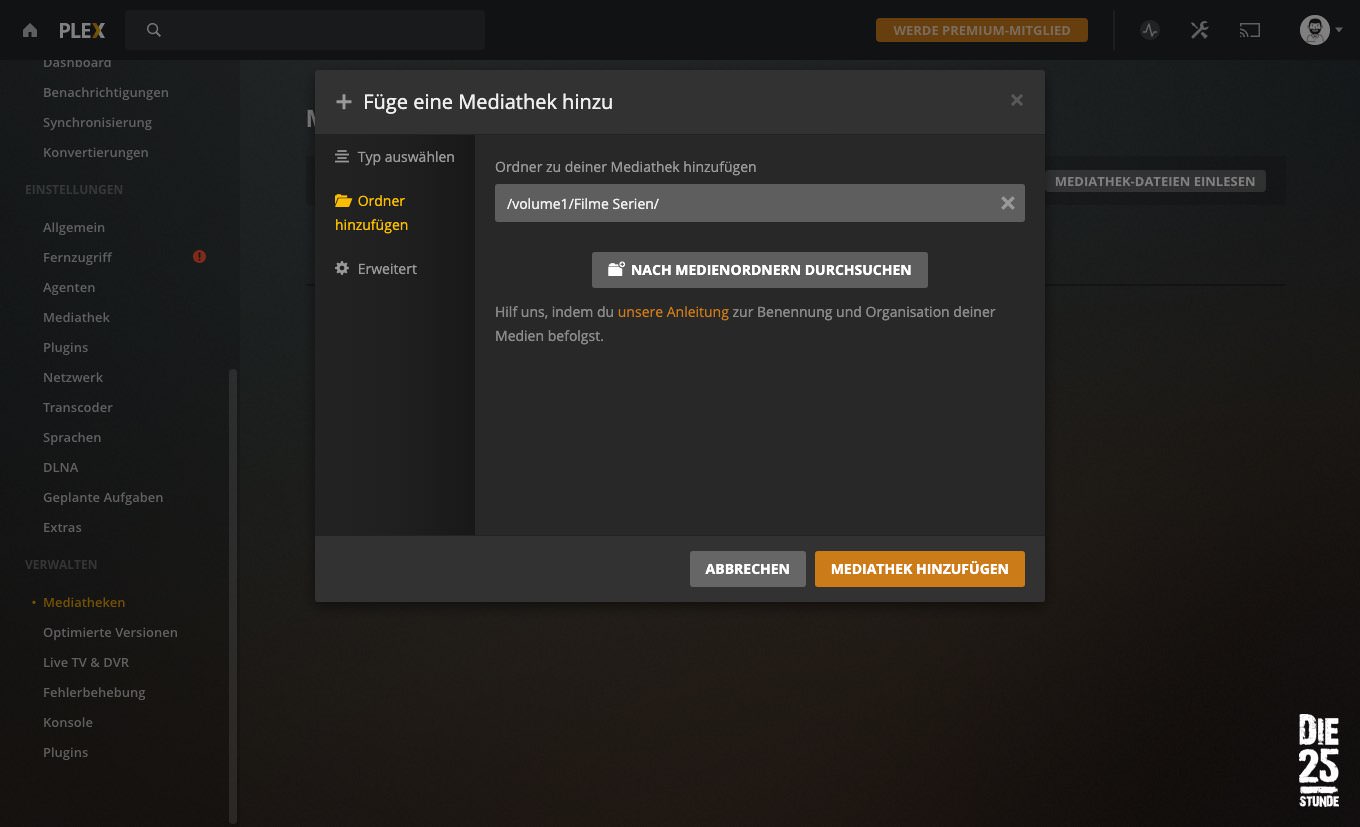
The best tutorial on how to install Raspbian on an SD is provided by the Raspberry Pi Foundation and can be found on their blog It is vitally important that we use the latest version of Raspbian with the Raspberry Pi 3 as it has tweaks that enable the Pi 3 to really fly. We start the project by installing the latest version of Raspbian on to an 8GB or greater SD card. An external USB hard drive, preferably powered by an external power supply.An Ethernet cable connected to a router.A minimum of a 2A power supply but for best results use a 2.5A power supply.A minimum of 8GB SD card (Class 10 for best results).So here is our guide to building a Plex media server using the Raspberry Pi 3. Working to 'n' standard, we can send HD video from our Pi 3 to any device on the network.wirelessly! The built in WIFI of the Raspberry Pi 3 is really fast. The new Raspberry Pi 3 CPU can scale, enabling it to power down when not in use but spring into life when needed. The new Pi 3 CPU is 64bit, and while the Raspbian operating system is still 32bit, the extra headroom is still utilised giving us a speed boost. Faster CPU, more CPU power enables our Raspberry Pi 3 to index our media library quicker.So how can this help our media server project? The CPU of the Raspberry Pi 3 is an ARM Cortex A53 clocked at 1.2GHz per core, giving us the most powerful Raspberry Pi ever! The new Raspberry Pi 3 is now 66% faster than the Raspberry Pi 2 and is approximately 10X faster than the original Raspberry Pi. VideoCore IV GPU and 3D now clocked at 400MHz and 300MHz respectively.


Recently we built a Plex Media Server using the Raspberry Pi 2, at the time the Raspberry Pi 2 was the most powerful board in the Raspberry Pi range.


 0 kommentar(er)
0 kommentar(er)
